Best bike GPS trackers: Added lightweight security
The best bike GPS trackers may help you find and retrieve a stolen bike
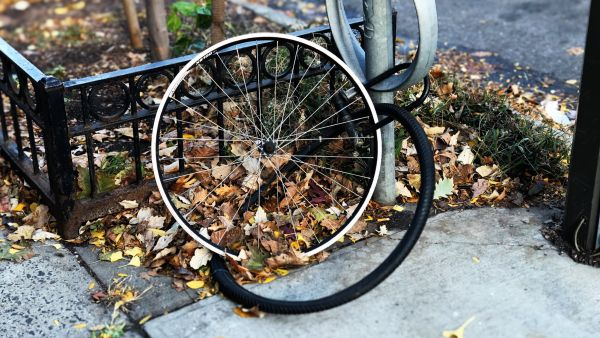
The best bike GPS trackers increase your chances of being reunited with a stolen bike, by broadcasting its location back to you once you've flagged it as lost.
There are two main ways in which GPS trackers function. Passive trackers work via a Bluetooth connection to a smartphone to say where they are. This information is then transmitted to you via the phone's wireless connection. It can work with your own phone, but Apple, Google and device makers allow you to receive alerts from other phone users if their phone comes into range of your lost bike.
The other option is a device with its own cellular network connection, which can then signal its location independently. These are more expensive both to buy and operate, usually requiring a monthly subscription to a wireless network.
Avoiding theft is definitely more important than trying to address it once it's happened, so investing in the best bike lock or the best lightweight bike lock is a sensible first step.
It's also important to consider bike security at home and some bike storage ideas can help here. Look further down the page for secure bike storage solutions for home use and a discussion of the best bike insurance options.
Best GPS bike trackers
Recent updates
We check our buyer's guides regularly to make sure that the content is up to date. This guide was last reviewed in April 2024, when all the products noted below were still available.
Best passive devices
Passive trackers rely on the proximity of a smartphone with the necessary software to identify the tracker tag and transmit a location. Apple Find My is the best-known example, but other brands make tracker tags that work in a similar manner.
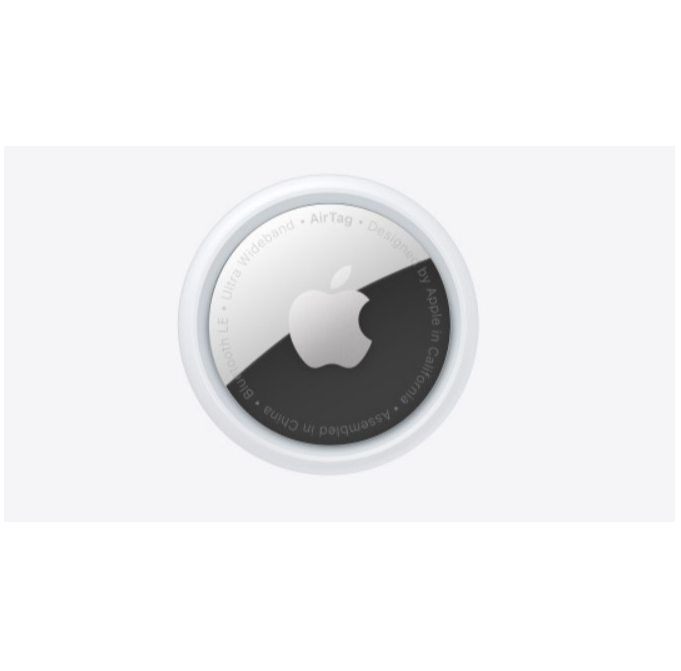
Best for iPhone users
The AirTag uses Apple's Find My network to track down your lost bike. Flag it as lost and the tracker's Bluetooth signal is picked up (anonymously) by iPhone, iPad or Mac devices, which share the AirTag's location with iCloud, which you can then access to find where it is.
It's reliant on fairly close proximity to an Apple device, which may limit its effectiveness. There's also an accelerometer built in, so you can set it up to tell if your bike gets moved. It's a cost-effective and simple solution and battery life is around a year.
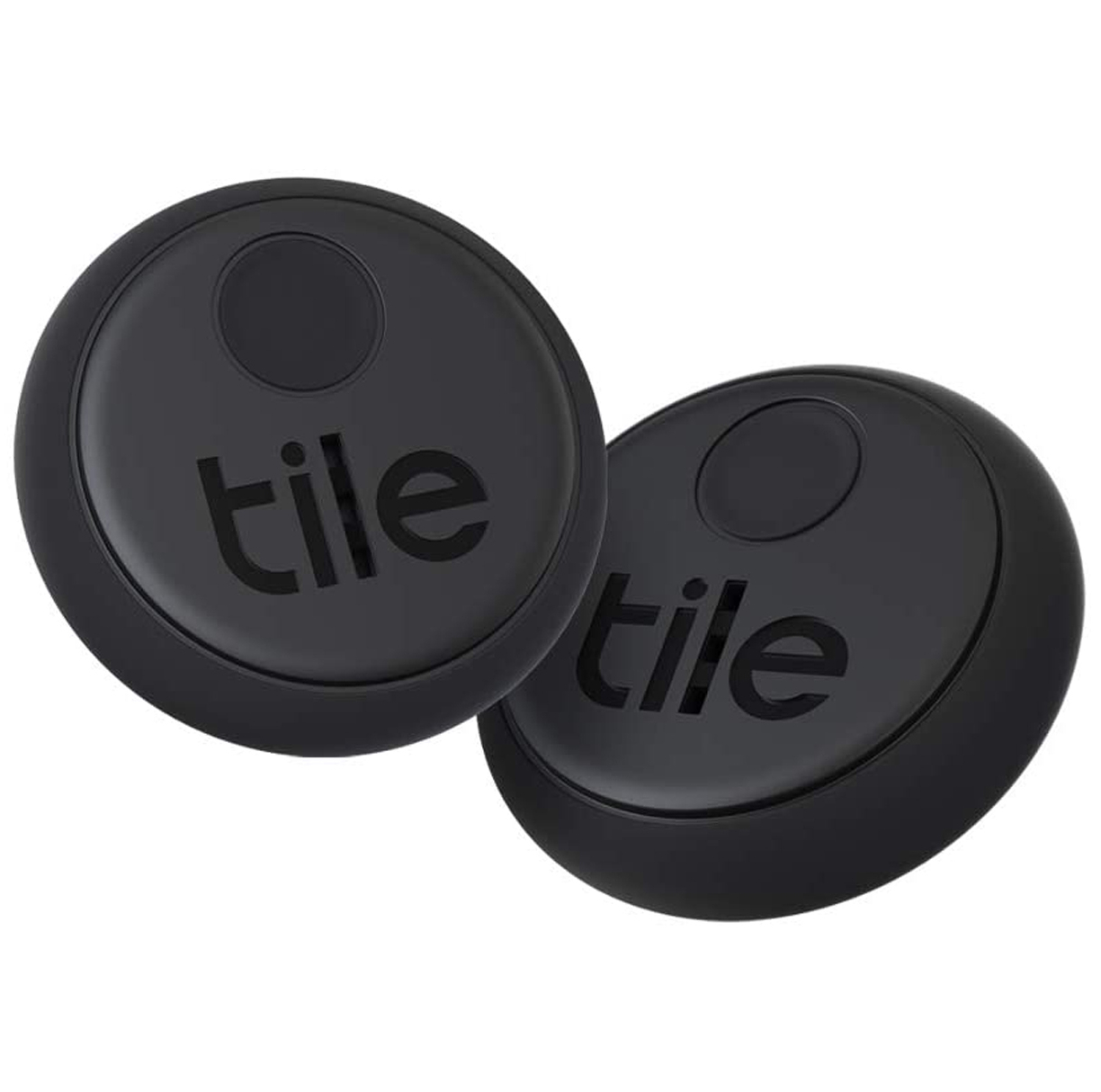
Best OS-agnostic option
The Sticker is the smallest Tile tracker and is adhesive, which means it's easy to fit. It removes cleanly as well, which is good news if you're precious about your paintwork.
It comes with a three-year battery life, and similarly to the AirTag, the power of community to locate your bike. Tile is open to all phones and other devices with either Apple iOS or Android and with Bluetooth active and the Tile app installed.
It doesn't have a replaceable battery, which means you'll need to replace it a few years down the line.

Best for choice of connectivity
Chipolo markets three different device types, which again use Bluetooth connectivity to a phone to broadcast their location.
As with Tile trackers, Chipolo has its own app, although this limits you to tracking by other app users; though Chipolo claims five million users worldwide.
Chipolo also sells a tracker that connects to Apple Find My and a second format for Android users which works with Google's equivalent Find My Device protocol, both of which increase your chance of finding your missing bike, with hundreds of millions of users each.
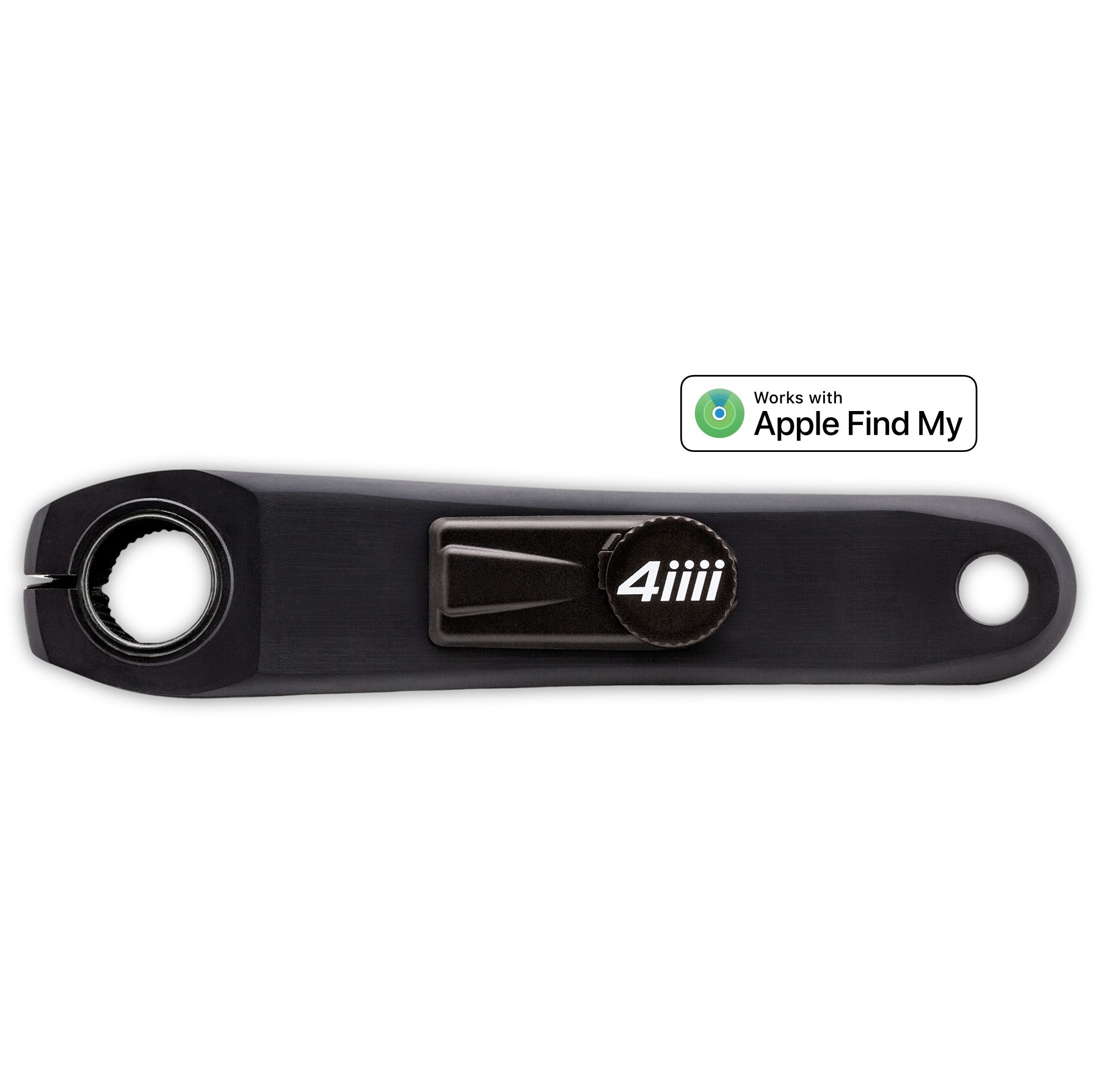
Best integrated solution
The 4iiii Precision 3+ and Precision 3+ Pro power meters incorporate Apple Find My, the former in a single sided meter that weighs 9g and the latter in a dual sided meter with a 20g weight. Power accuracy is claimed at +/-1 percent.
Both promise excellent battery life, which 4iiii says is more than 500 hours and are powered by coin cells. The Apple Find My tech hasn't changed the price or spec, so it's a good way to incorporate passive tracking tech on your bike.
Best network-enabled devices
While the above devices rely on proximity to a phone with the required software activated to locate your bike, those below have their own connectivity to a wireless network, usually using a network of things protocol such as Sigfox.
That means that they don't need a phone nearby to broadcast their position, although they do need to be within the range of the wireless network used.
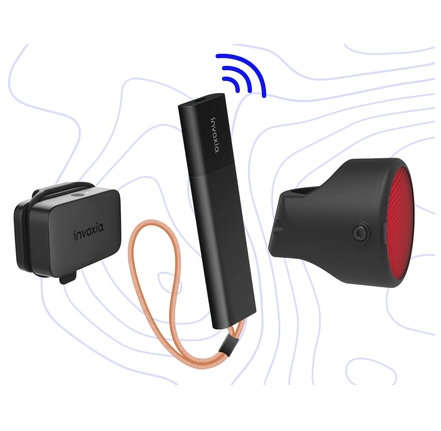
Best for hiding in plain sight
The Invoxia Bike Tracker is housed within a reflector. While a rear light might be stolen, a reflector is likely to stay put and the thinking is that thieves won't realise it's actually a GPS tracker in disguise.
It's fitted with a motion sensor and you can use its accompanying app to set up geofencing. It will send alerts directly to your phone if the tracker senses suspicious movements or is moved outside that boundary.
It uses low-power Sigfox connectivity, which means around three months of battery life, but this also means that network coverage may be limited in some areas.
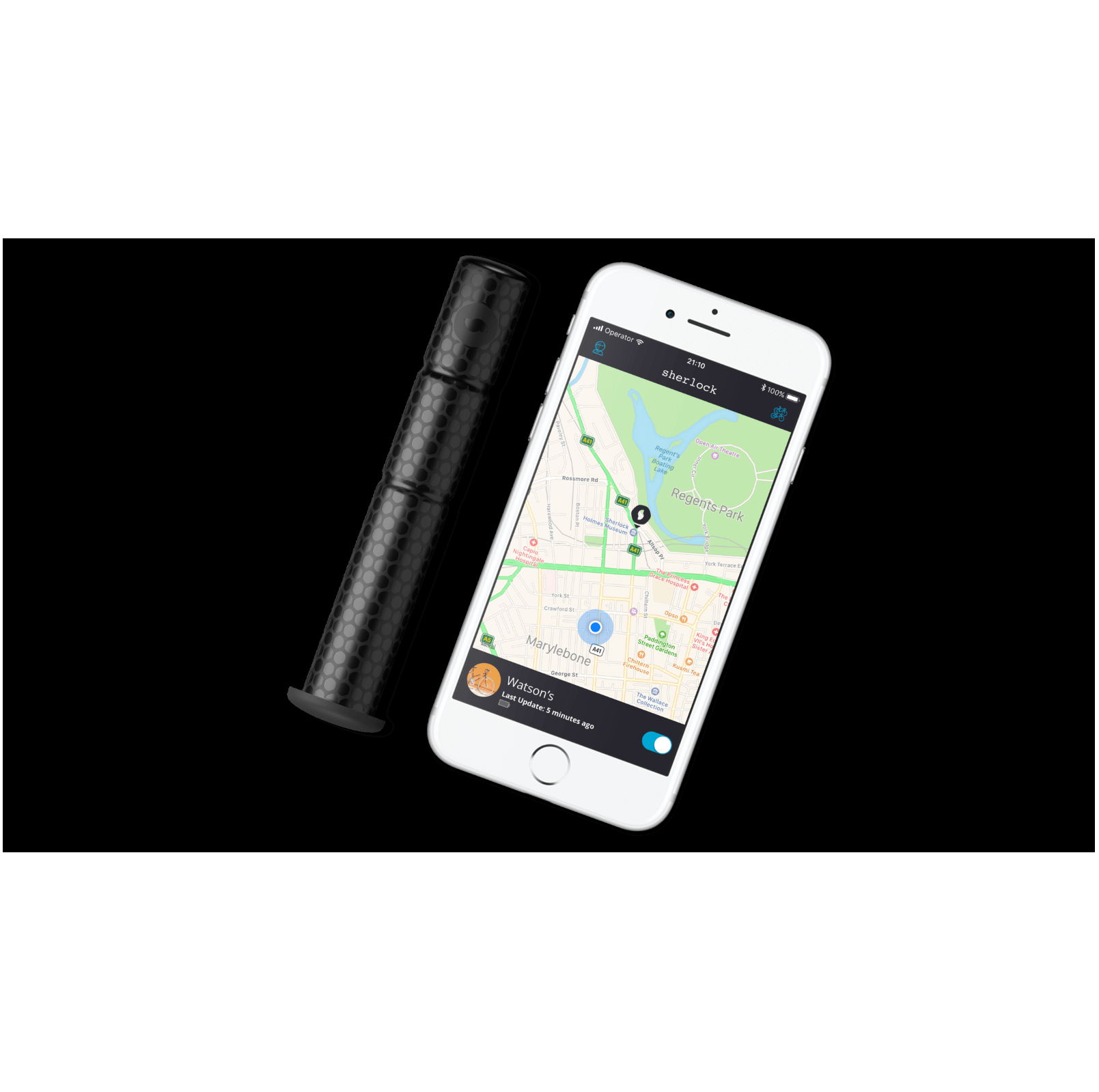
Best for invisible tracking
The Sherlock Bike GPS tracker slots inside your handlebar, making it practically invisible to thieves. The device weighs approximately 40g, so it doesn't add a huge amount of weight, and it's flexible enough to work with most handlebar setups. There's a twin bar end included, so you're not mismatched.
The GPS tracker has an embedded SIM and the first two years of connectivity are included in the purchase price. Afterwards, it's just £2.50 a month.
The built-in motion sensor provides an alert if your bike is moved, and you can track your bike's location via Google Maps.
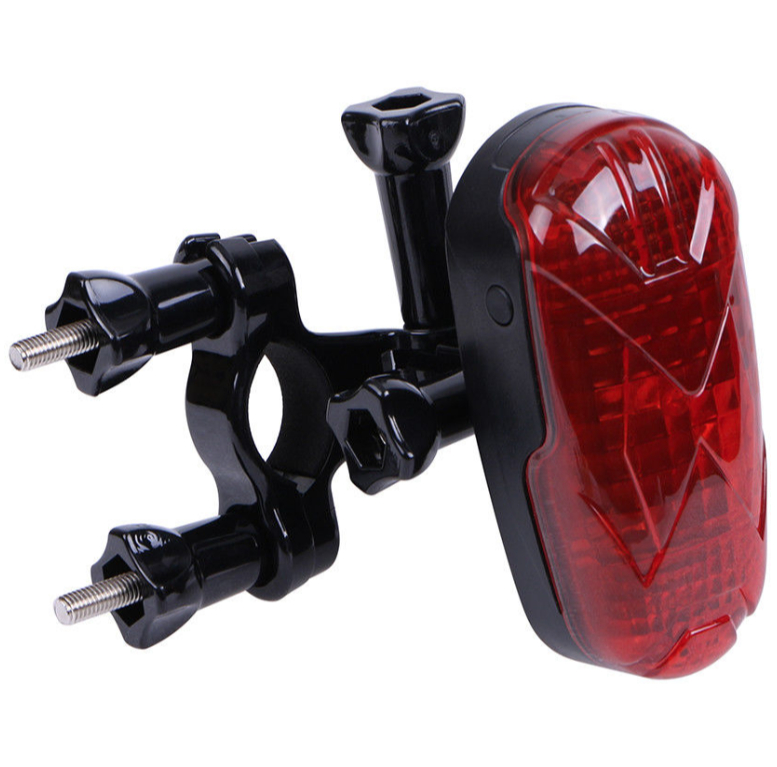
Best multipurpose tracker
A tracker hidden in a bike frame may have limited signal strength and charging might be a problem.
Often bikes spend months in the hands of a thief and even accessories like lights never get touched. It may be that no one bothers to remove a light.
The TK Star tracker sits inside a tail light, doubling its usefulness. It has a battery life of around 25 days, and comes with an accompanying app with movement alerts and geofencing.

Best for easy bike integration
Despite its name, the Japanese Alterlock bike tracker is actually a bike alarm with a GPS tracker built in. It sits under your bottle cage and you can buy security bolts to make sure it can't be removed. It's set or unset with the accompanying app and claimed battery life is up to 1.5 months.
Movement will set off an alarm and an alert will be sent to your phone. Over shorter distances, it works over Bluetooth but also uses the Sigfox protocol over GSM to post its position.
How to avoid theft in the first place?
You probably came to this guide looking for a GPS tracker so that when your bike gets stolen you can track it. However, more often than not, bikes are stolen from homes rather than the street. This is especially true of some of the most expensive bikes that never find themselves locked on a street, so here's another solution to the same problem.
Garages, or sheds, are easy targets for a bike thief and they are places where owners often have relaxed security. When you get your bike home, even if it has GPS tracking, consider locking it to an anchor embedded in your floor or wall and using a smart lock with an integrated alarm. Sleep soundly knowing that you won't come out in the morning to a broken garage door and a missing bike.
You can read our post on how to prevent bike theft and browse our best bike locks post for more bike security options.
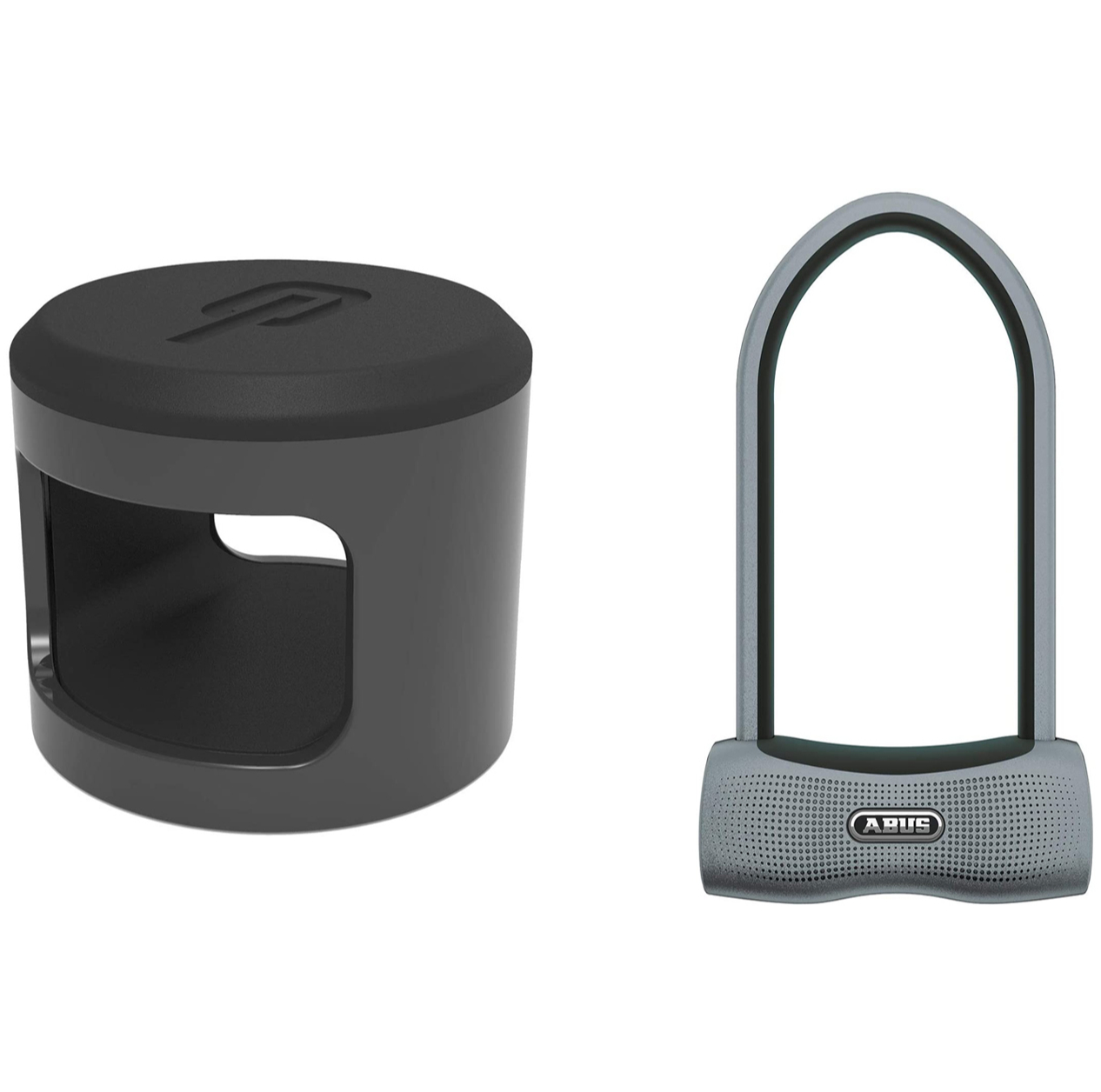
Best high security combo
To keep your bike secure at home, all the components of a locking solution need to be highly rated, with no weak links.
Pair the Hiplok ANKR floor/wall anchor with the ABUS 770X alarmed smart lock for a Diamond-rated at-home solution that's secure, should deter thieves and will alert you to any tampering.
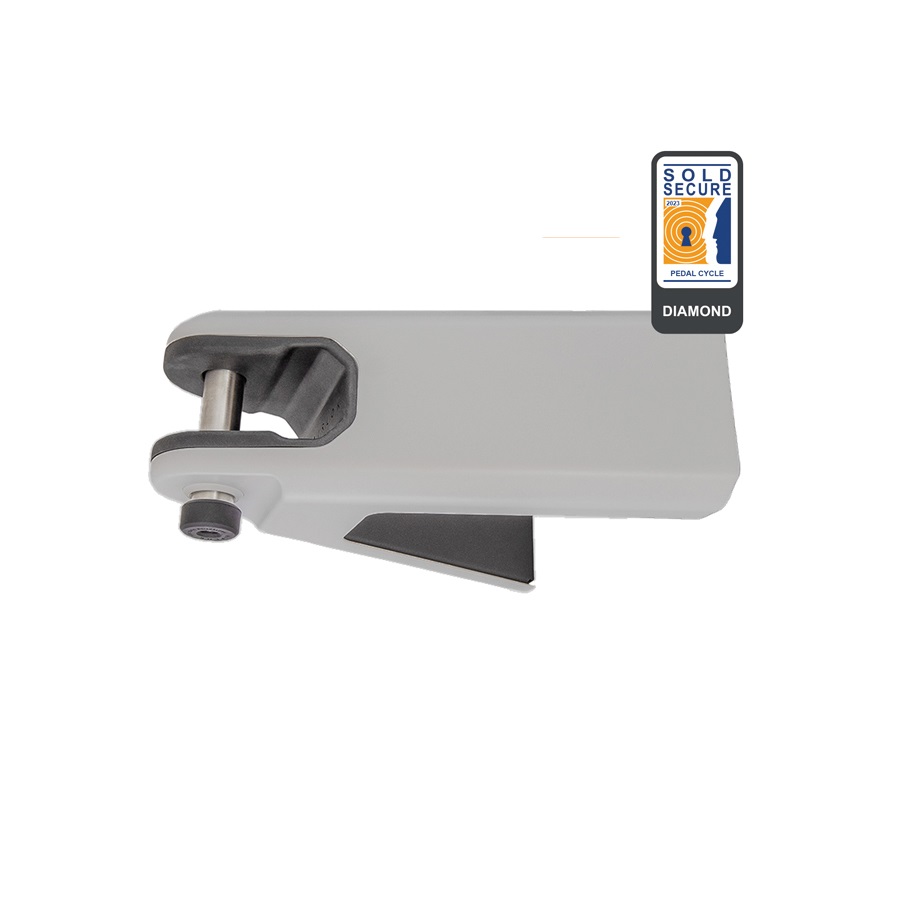
Best wall-mounted option
Another option from Hiplok, the Airlok mounts to a wall with secure bolts, then a hardened pin locks your bike in place. The steel frame is covered with a rubberised mount so it doesn't scratch your frame. It's Sold Secure Diamond rated, for a one-piece solution that's a bit more stylish than a ground anchor and U-lock.
How to choose
As with all things tech, there are a range of different considerations when choosing the best GPS bike tracker for your needs. We'll run through the key decisions you'll need to make.
How do I choose a GPS tracker?
When choosing the best GPS bike tracker, you need to think about mounting options, connectivity, waterproofing and cost. When it comes to mounting the tracker, consider the type of bike you have and where you could easily fit it that's discreet.
Waterproofing is important if your bike is being left outside in all weather, especially after it's been stolen. The level of waterproofing is indicated by an IP rating, and a good GPS tracker should have at least an IP65 rating, which means it will stand up to a lot of rain.
IP rating refers to the Ingress Protection rating and refers to how well a device resists liquids and solids. The first digit in the rating refers to how well a device prevents solids from entering and the second refers to liquids; generally the higher the number the better.
What does 'connectivity' mean in relation to GPS tracking?
This is a question of how GPS tracking actually works. Put simply, GPS (global positioning system) determines the location of something or someone, storing the location within the tracker itself, and transmitting it via internet connection through WiFi, radio or cellular frequencies. By using the GNSS (Global Navigation Satellite System), a GPS tracker can use satellite data to provide real-time location data.
Some trackers require a SIM card, which can send data directly to your mobile phone over a network connection. It often comes with a monthly subscription cost, while others don't.
Some GPS trackers use Bluetooth instead of satellite information to connect to your phone and send location data. These will come with a lower price tag as they use much less advanced technology, but will only work if your bike is within a designated range (usually up to around 50ft), whereas cellular trackers can have a range of around 45 miles.
Tech such as Apple Find My extends this location via phone to any phone with the necessary app, so that your search range is broadened, although you're still dependent on an active phone in proximity to the tracker and with the network connectivity to send this information back to your own phone.
Are bike GPS trackers worth it?
We'd say yes, they are. Sure, prevention is better than cure, which is why we'd definitely recommend investing in some good bike insurance and decent locks, but even with the best prevention, bikes can still be stolen. A GPS tracker can be the last-ditch attempt to get your bike back. If the cost of using one is much less than the cost of replacing your bike, we'd recommend it.
Where do you put a GPS tracker on a bike?
The key to good GPS tracker placement is for it to be discreet enough that someone who successfully steals your bike might not realise it's there (and therefore won't interfere with your tracking).
Depending on which tracker you go for, they can be fitted to the stem, seat post, or frame. Some trackers are designed to go somewhere specific, and even hide in plain sight, like the TKStar tracker, which is housed in a rear bike light.
Can thieves disable GPS trackers?
Yes, it's very possible for bike thieves to disable GPS trackers, which is why it's important to choose somewhere discreet to fit one. If this is a primary concern, you may want to opt for a tracker that resembles a light (e.g. TKStar), or one that takes a bit more work to dismantle and blends into the frame (e.g. Alterlock).
How to be prepared in case of theft
What insurance details should I check?
Most people rely on their home insurance to cover their bikes. Compared to dedicated insurance for a bike, it's often inexpensive and you probably already have it. There are a few details to consider though. This kind of insurance policy is not designed for expensive bikes. In fact, unless you ask the right questions of the insurance company you might get incorrect information.
Homeowners' insurance regularly has maximum coverage for personal property. This writer happens to have $109,900. Bikes fall under that coverage and it often applies even if your bike isn't at home. Call your insurance company and ask them about it and they will confirm this.
If you ask for more details, what you will find is that most coverage has a max per item covered. In some cases, electronics, jewellery, and sports equipment will even have their own special per-item limits. A nice bike, or for that matter a nice laptop, will quickly blow through that maximum coverage. Most of the time all you have to do is make clear how much your bike costs new then make sure the max per item coverage is enough. Don't stop there though.
You also want to ask for the details about the determination of bike values and what proof you need. The last thing you want to do is get into a haggling war with your insurance company about your bike's value. Make sure the coverage is for replacement cost, not depreciated cost, and what proof they need of that. You will want to have whatever proof of ownership and cost ready before a bike gets stolen.
What records of ownership do I need?
Ask any police officer what information they need about a stolen bike and they will tell you the serial number. Without the serial number, even if by some miracle your bike gets recovered it might not ever make it back to you. Don't be slow about it either; once the bike is gone it's probably impossible to find the serial number. There's a chance the shop you bought it from has a record, but there are no guarantees. It's your bike, it's your responsibility.
You never know who a bike thief is but there's a good chance they are criminals in other ways too. Your local law enforcement may, or may not, spend resources on investigating bike theft, but even if not due to bike theft, criminals have a way of finding themselves in the hands of law enforcement. They might come in for some other charge and if you've got your serial number on record as stolen it will turn up with a quick search. Just having the serial number, and including it on the police report, makes it much more likely you will get it back.
It's also worth registering your bike with an organisation like Bike Register in the UK, Bike Index in the US or the National Bike Register in Australia and getting it marked with a register number that can be used to cross-reference it to you if it is recovered.
What help can I expect with a stolen bike and what should I do?
This one goes both ways. For a lot of people, the moment a bike is missing there's an expectation it's gone for good. On the other hand, there are other people who expect law enforcement to search day and night to get their bikes back. Another common misconception is that bikes are instantly broken down into components and resold piece by piece. Or that bike theft is either highly professional or completely random.
What we've seen over and over is a complete mix. Sometimes law enforcement will have an entire division and tons of resources committed to bike theft. Other times you will be completely on your own. Sometimes bike theft is highly organised and efficient. A lot of the time it's completely random and bikes turn up months later in almost the exact condition they were last seen. Even accessories like lights and bags will sometimes be there.
Instead of expectations, do what you can and move on. Move quickly to mobilise any organisation in your area to help. Pictures and serial numbers will help. At the same time know that it might be gone and you've got to take steps to move on.
Get The Leadout Newsletter
The latest race content, interviews, features, reviews and expert buying guides, direct to your inbox!
Josh hails from the Pacific Northwest of the United States but would prefer riding through the desert than the rain. He will happily talk for hours about the minutiae of cycling tech but also has an understanding that most people just want things to work. He is a road cyclist at heart and doesn't care much if those roads are paved, dirt, or digital. Although he rarely races, if you ask him to ride from sunrise to sunset the answer will be yes. Height: 5'9" Weight: 140 lb. Rides: Salsa Warbird, Cannondale CAAD9, Enve Melee, Look 795 Blade RS, Priority Continuum Onyx
